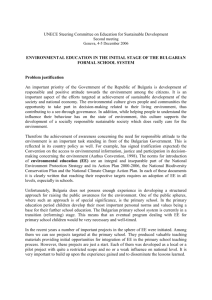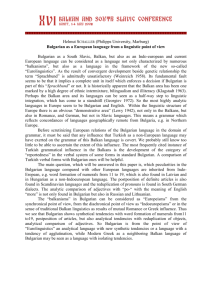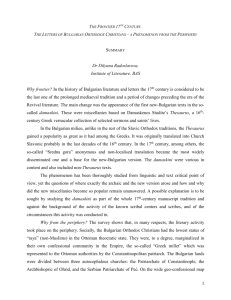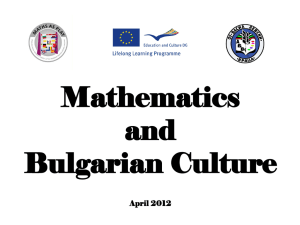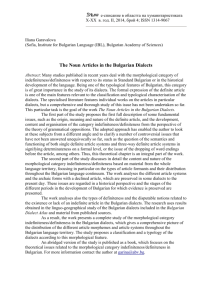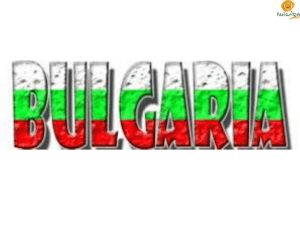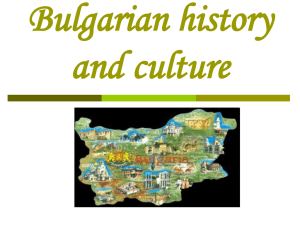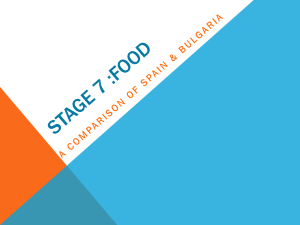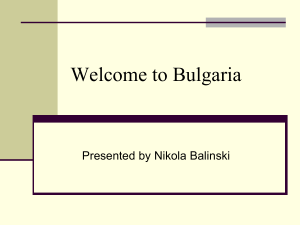Mirela Ivanova Bulgarian National Cuisine With - e
advertisement
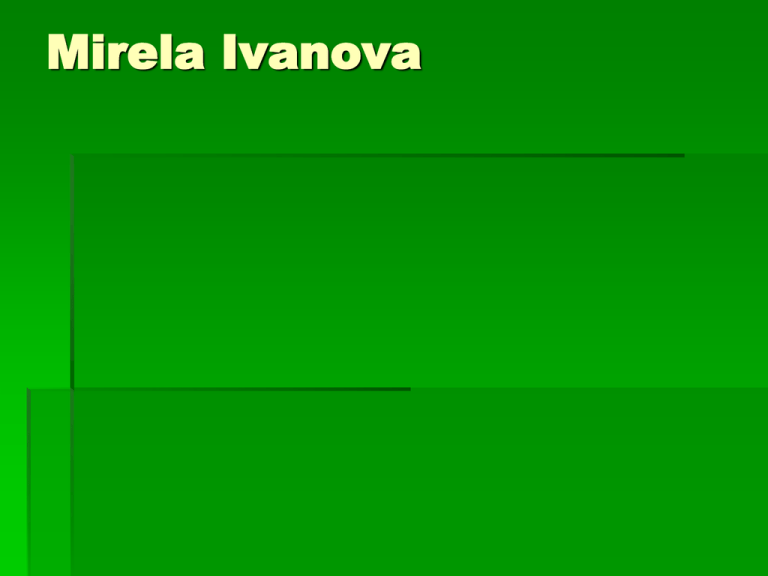
Mirela Ivanova Bulgarian National Cuisine With the establishment of the Bulgarian state was the beginning of the merger of the kitchens of the Thracians, Slavs and Bulgars and the construction of national cuisine. Each ethnic group is included, with their culinary traditions. Thus was formed the Bulgarian cuisine. Here are some specific examples of the rich Bulgarian cuisine presented by Bulgarian art. “Who does not work,shall not eat” .That is the name of the Bulgarian folk story by Angel Karalijchev. Bulgarian cuisine is nothing without the Bulgarian tasty baked loaf. This is clearly shown in the story of the Bulgarian author. The story tells for a girl who marries.After marriage she moved at her husband’s house where live his parents and she does nothing at home.She doesn’t cook and rest all day. At the first night they all gathered at the table but her’s father in law doesn’t give her a piece of the rounf loaf.On the next day she doesn’t cook again and the story has repeated. When the mother in low asked her husbend why he doesn’t give a piece for the women of her son,the father in law answered that she haven’t been working so she is not hungry.On the morning she get up early and kneaded loaf.At that night her father in law gave her deserved piece. In the story of Angel Karalijchev we can see that the Bulgarian bread occupies an important place at the table . The rounf loaf is described as so delicious. In this story is also mentioned banitsa. It’s is a traditional Bulgarian food prepared by layering a mixture of whisked eggs and pieces of cheese and then baking it in an oven. Banitsa is served for breakfast with plain yogurt, ayran, or boza. It can be eaten hot or cold. Some varieties include banitsa with spinach (spanachena banitsa) or the sweet version, banitsa with milk (mlechna banitsa) or pumpkin (tikvenik). Pumpkin People in Bulgaria cook pumpkin in a very tasty way. For example it’s described in Elin Pelin’s story – “Backed pumpkin”.”Delicious piece of pumpkin again flashed before his eyes - a nice, warm, sweet, and above it is tempting you thin vapor. )The pumpkin is also mantioned in a lot of Bulgarians folk songs.. “Popara” The sop is popular food in Bulgaria prepared by old or fresh bread, torn into small pieces (Salzach), and soaked in milk, tea or hot water. Traditionally made from bread, stayed two or three days, at which, once dipped in hot liquid is dobalya crumbled white cheese, butter and sugar. Example for this food in bulgarian art is the story “Zlatnoto momiche”(“The golden girl”) “Бай Ганьо у Иречeка”(Bai Ganio at Irecheka) It’s written by Aleko Konstantinov. In a part of the text are mentioned the pappers.They are not Bulgarian but there is a variety of sweet pappers,which are Bulgarian and they are called “Cambi”. In a part of Dimitar Shumaleev’s work – Komarite there are mentioned “rakija” and “turshiq” Rakija is a national drink of Bulgaria.It’s produced from plums, kajsija, produced from apricots, or rakija is made from grapes. Fruits less commonly used are peaches, apples, pears, cherries, figs, blackberries, and quince. Turshija(Torshi) is produced from pickled vegetables.In Bulgarian cuisine the most popular types are tsarska turshiya 'king's pickle' and selska turshiya 'country pickle'. Toursi is a traditional appetizer and go with rakija. This presentation presented a small part of specific Bulgarian cuisine by Bulgarian art.
